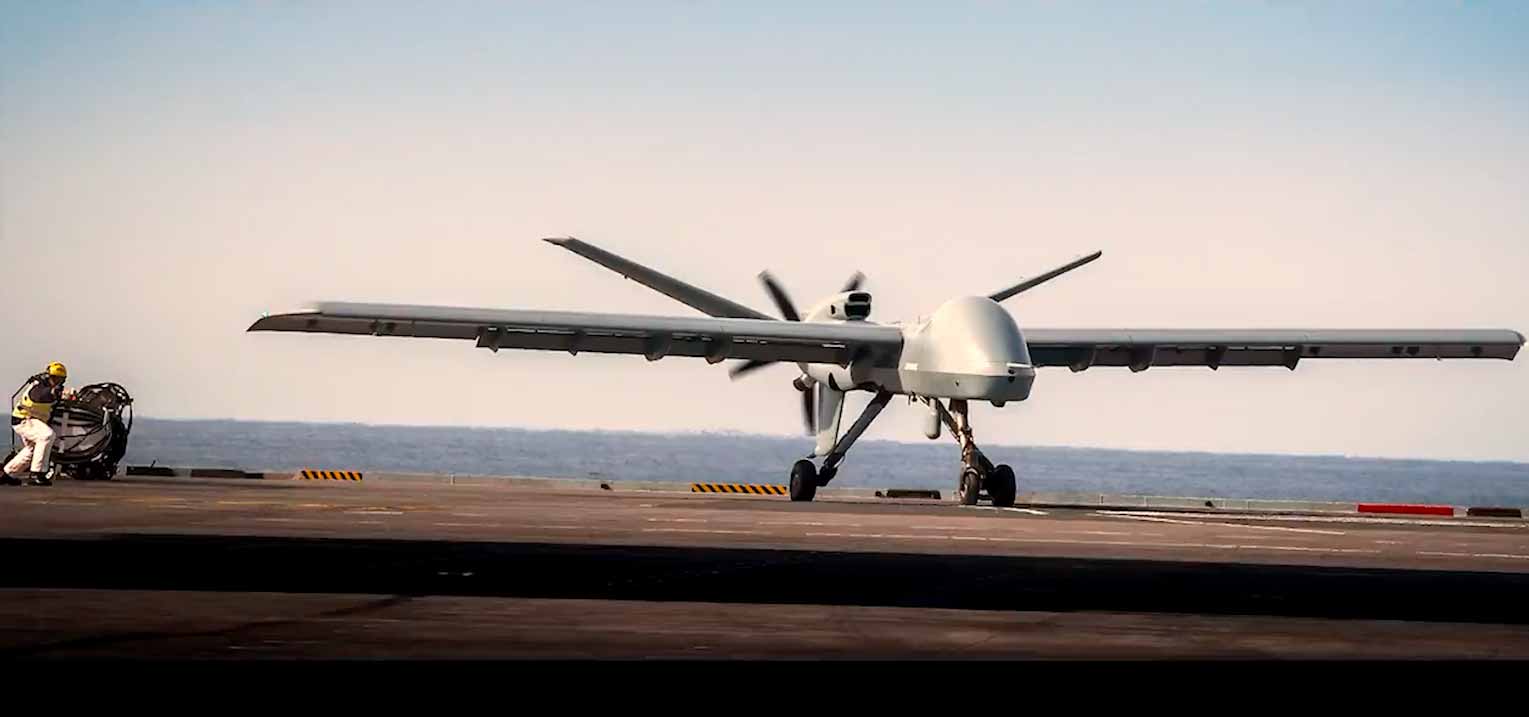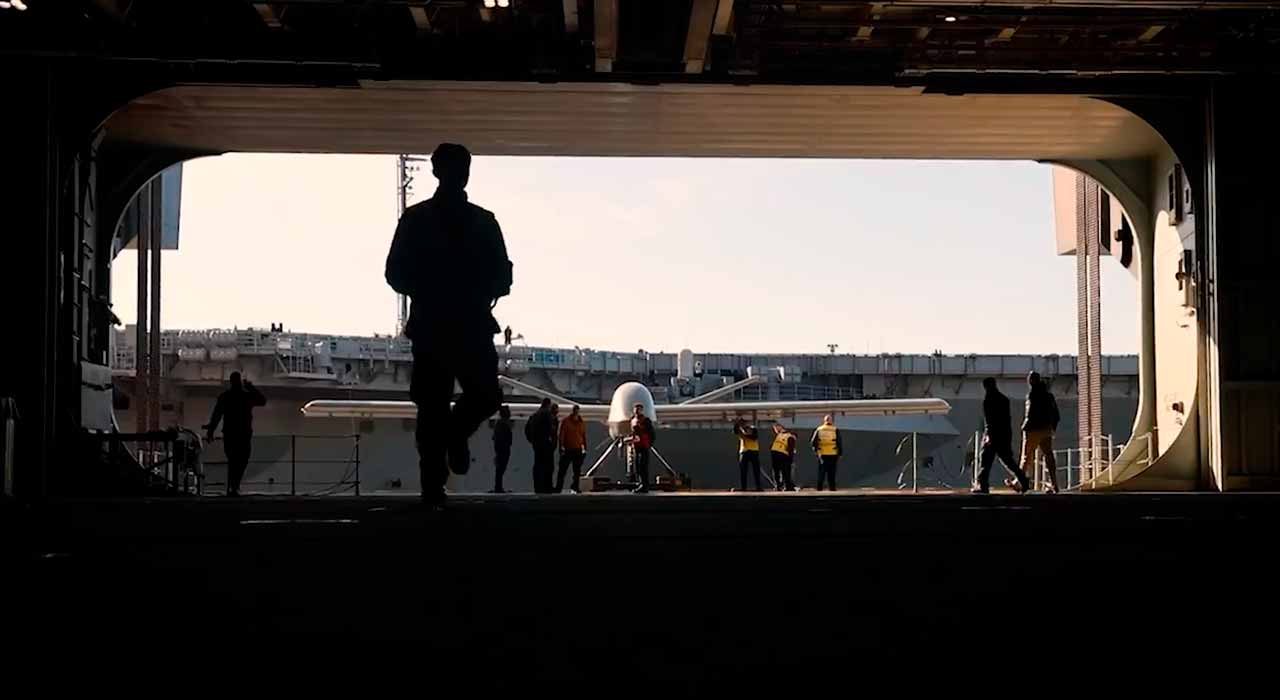 Video shows drone larger than F-35 fighter jet being launched from Royal Navy aircraft carrier. Photos and videos: Reproduction Twitter @HMSPWLS
Video shows drone larger than F-35 fighter jet being launched from Royal Navy aircraft carrier. Photos and videos: Reproduction Twitter @HMSPWLS
The largest unmanned aircraft ever launched from a Royal Navy aircraft carrier has paved the way for the UK’s next generation of naval air power.
+ 10 Craziness IT Technicians Have Faced
+ Video: Ukrainian Sniper Sets Record for Longest Successful Shot
The remotely operated aircraft named ‘Mojave‘ – piloted by a “pilot” at a computer terminal – took off and safely landed back aboard the HMS Prince of Wales in an exclusive test off the east coast of the US. The drone can carry four Hellfire missiles.
+ Click here to watch the video
It’s the first time such a large drone – nine meters in length, with a wingspan of 17 meters (six meters wider than an F-35B Lightning fighter jet) and weighing over 1.5 tons – has flown from a carrier outside of the US Navy.
“The Mojave test is European first – the first time a Remotely Piloted Aerial System of this size has operated to and from a carrier outside of the United States,” said Rear Admiral James Parkin, Royal Navy Develop director.
The Royal Navy has two decades of experience operating unmanned aircraft from its ships, but the existing Fleet Air Arm systems – like the hand-launched Puma and the new miniature helicopter Peregrine, entering service in January – are designed for short-range surveillance operations on land and at sea.
The Mojave – a version of the MQ1C Gray Eagle adapted for short takeoffs and landings from even shorter runways than the flight deck of the Queen Elizabeth-class carriers – is a much larger and more complex aircraft.
Produced by the American company General Atomics, the Mojave is capable of conducting numerous long-endurance missions from medium altitudes.

It belongs to the same family of aircraft as the new Protector RG Mk1 aircraft of the Royal Air Force; these remotely piloted “medium altitude long endurance” aircraft are capable of conducting surveillance and long-range attack missions over many thousands of square kilometers.
Months of planning by experts from the Royal Navy, General Atomics, and the crew of the HMS Prince of Wales went into the test – one of several involving unmanned aircraft and F-35 this autumn to push the boundaries of operations involving the UK’s two carriers.
The HMS Prince of Wales is now engaged in intensive training and testing with the US Marine Corps before returning home to Portsmouth next month.
Source: ukdefencejournal
Photos and videos: Reproduction Twitter @HMSPWLS

